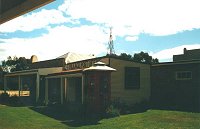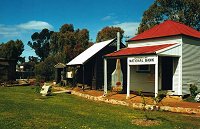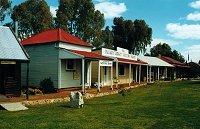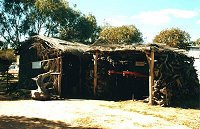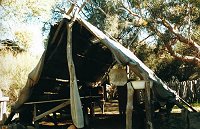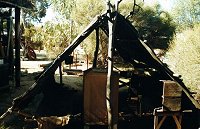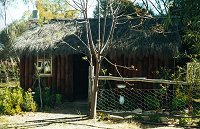 |
|
Historical
Village started in 1978 as a working memorial to pioneers and now it
is the largest and best social history museum in Western Australia.
If you are in Perth and looking for an alternative to the beach or shops
on the weekend - it is definitely worth a visit. There are 24 buildings
that house the history of the region. Four of the historic buildings
(school, bank, quarantine ward and hall) were relocated. Other buildings
such as stone church were specifically constructed in keeping with the
period and the methods used.
|
|
There
is a large collection of old argicultural machinery. In the Post Office
you can flip through the West Australian White Pages directories dated
1909 and 1911. The School has a very interesting collection of historic
school work done by students in early 20-th century and, in difference
with other museums where everything is kept under the glass, you can
actually touch it and read through the one hundred year old copy-book.
The hall has interesting collection of old photos/newspapers/memorabilia
and a large collection of minerals.
|
|
Please
note that Wagin Historical Village is a "community project built
and funded entirely by voluntary labour and love" and is a the
winner of the 2002 Heartlands Tourism Award for Volunteers. The Wagin
Historical Village has also won the 2002 Tidy Towns Cultural Heritage
Award, the Town of Wagin won the 2002 5 Star Award and the 2002 Tidy
Town Award for a Town under 2,000 people, and the Tourist Visitors Centre
won the 2002 Tidy Town Friendly Tourism Award. For more information
please visit the Village
Internet site.
|
|
Photos
on this page are numbered and additional information is provided below.
Please click on the image to enlarge it.
|
